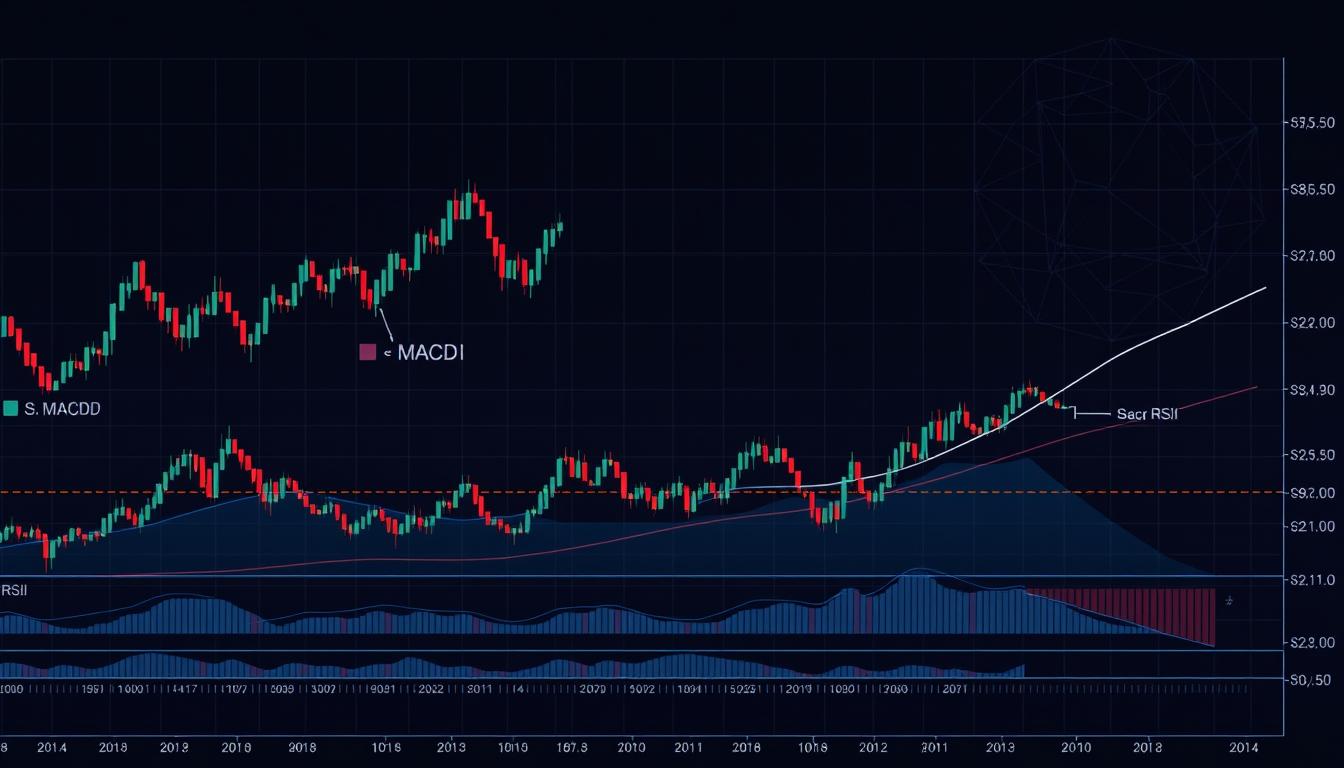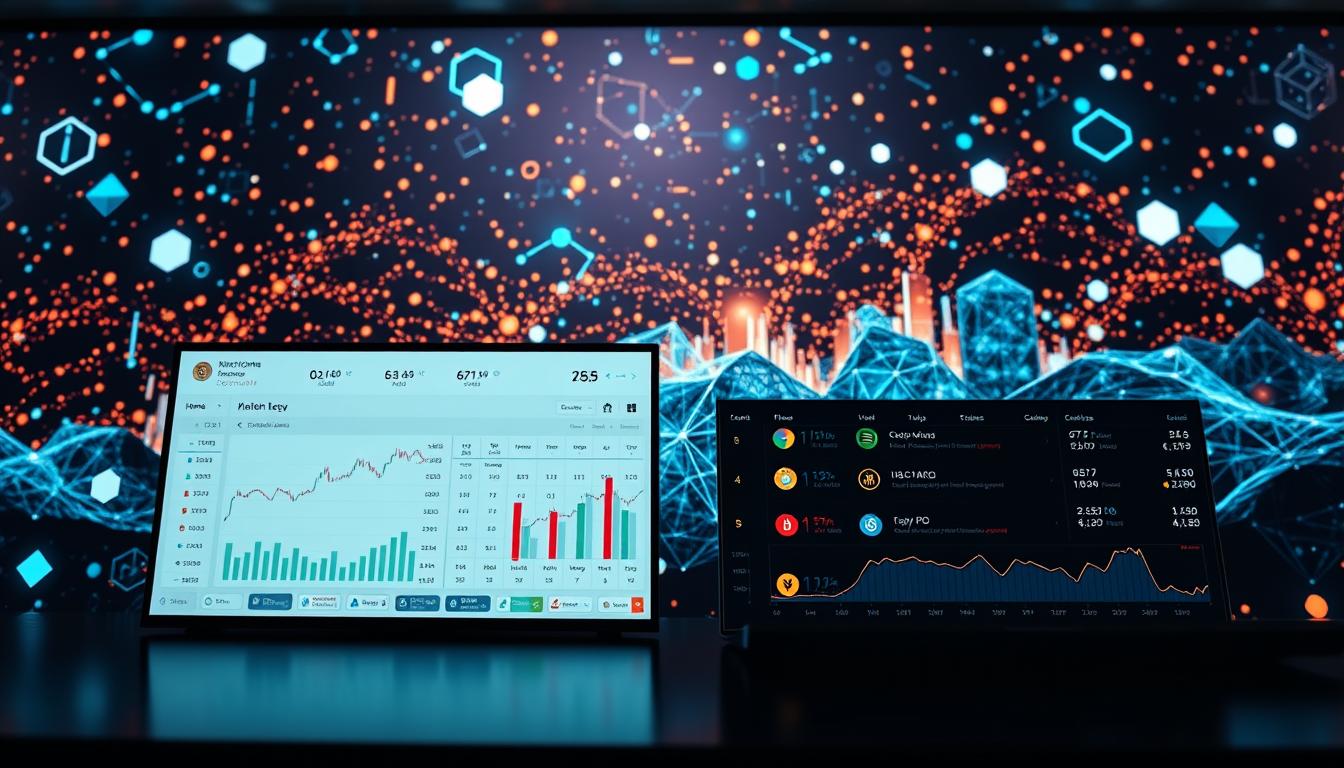Now Reading: Crypto Market Technical Analysis Chart Patterns Guide
- 01
Crypto Market Technical Analysis Chart Patterns Guide
Crypto Market Technical Analysis Chart Patterns Guide

Navigating the dynamic world of cryptocurrency trading demands a robust understanding of technical analysis. This comprehensive guide explores the intricate landscape of chart pattern basics, providing traders with essential insights into crypto market analysis techniques that can transform investment strategies.
Technical analysis serves as a critical tool for cryptocurrency investors seeking to decode market movements and predict potential price trajectories. By mastering chart pattern recognition, traders can gain a significant competitive edge in the volatile digital asset marketplace.
Successful crypto market analysis requires a strategic approach that blends visual pattern identification with sophisticated trading indicators. Our guide will unpack the fundamental principles that drive effective technical analysis, empowering investors to make data-driven decisions.
Key Takeaways
- Learn foundational techniques for crypto market technical analysis
- Understand critical chart pattern identification strategies
- Develop skills to interpret complex market signals
- Recognize potential trend reversals and continuation patterns
- Build a comprehensive approach to cryptocurrency trading
Understanding Technical Analysis in Cryptocurrency Trading
Technical analysis stands as a critical approach for navigating the volatile cryptocurrency markets. Traders rely on this analytical method to decode price movements, predict potential trends, and make informed trading decisions. By examining historical price data and chart patterns, investors gain valuable insights into market dynamics.
The foundation of technical analysis basics involves studying price action, volume, and market sentiment. Crypto trading indicators play a pivotal role in helping traders understand market conditions and potential price trajectories.
Basic Principles of Technical Analysis
Successful cryptocurrency trading requires a deep understanding of key analytical principles:
- Price movements reflect all available market information
- Historical price patterns tend to repeat
- Market trends are more likely to continue than reverse
- Psychological factors significantly impact trading decisions
Role of Chart Patterns in Trading Decisions
Chart pattern importance cannot be overstated in cryptocurrency trading. These visual representations help traders identify potential market trends and make strategic entry and exit decisions.
| Pattern Type | Market Signal | Reliability |
|---|---|---|
| Head and Shoulders | Potential Trend Reversal | High |
| Double Top/Bottom | Trend Continuation/Reversal | Medium |
| Triangular Patterns | Consolidation | Medium-High |
Key Technical Indicators for Crypto Markets
Traders leverage various crypto trading indicators to gain market insights:
- Moving Averages: Track price trends over specific periods
- Relative Strength Index (RSI): Measure momentum and potential overbought/oversold conditions
- Bollinger Bands: Assess market volatility and potential price breakouts
- MACD (Moving Average Convergence Divergence): Identify trend changes and momentum
By mastering these technical analysis techniques, cryptocurrency traders can develop more robust trading strategies and improve their decision-making process.
Essential Tools for Crypto Chart Analysis
Navigating the complex world of cryptocurrency trading requires sophisticated crypto charting tools that empower investors to make informed decisions. Technical analysis software has become an essential component for traders seeking to understand market dynamics and predict potential price movements.
Selecting the right trading platforms can significantly impact your cryptocurrency investment strategy. Traders have access to numerous powerful tools designed to simplify technical analysis and enhance trading performance.
- Professional-grade crypto charting tools with real-time data
- Advanced technical analysis software with comprehensive indicator libraries
- User-friendly trading platforms compatible with multiple exchanges
Key features to consider when evaluating technical analysis software include:
- Price chart customization options
- Technical indicator integration
- Historical data analysis capabilities
- Cross-platform compatibility
| Platform | Key Features | Price Range |
|---|---|---|
| TradingView | Advanced charting, social networking | Free – $59.95/month |
| CoinGecko | Comprehensive crypto data, basic charts | Free |
| Coinigy | Multi-exchange trading, professional tools | $18.66 – $99.99/month |
Professional traders recommend investing in versatile technical analysis software that offers robust features and intuitive interfaces. By carefully selecting crypto charting tools tailored to your specific trading style, you can gain a competitive edge in the dynamic cryptocurrency market.
Fundamental Concepts of Crypto Market Technical Analysis Chart Patterns
Cryptocurrency traders rely on technical analysis to navigate the complex digital asset markets. Understanding key chart pattern concepts helps investors make informed trading decisions and identify potential market movements.
Technical analysis provides traders with critical tools for interpreting market dynamics. By examining support and resistance levels, trend lines, and volume indicators, investors can develop a comprehensive strategy for cryptocurrency trading.
Support and Resistance Levels
Support and resistance levels are fundamental price points that indicate potential market turning points. These levels represent price ranges where cryptocurrencies typically stop and reverse direction:
- Support levels indicate where buying pressure prevents further price declines
- Resistance levels show where selling pressure prevents additional price increases
- Traders use these levels to identify potential entry and exit points
Trend Lines and Channels
Trend analysis helps traders visualize market direction and potential price movements. Trend lines connect significant price points to reveal market momentum:
- Upward trending lines indicate bullish market sentiment
- Downward trending lines suggest bearish market conditions
- Price channels help predict potential price ranges
Volume Analysis Basics
Volume indicators provide crucial insights into market strength and potential price changes. Traders use volume analysis to confirm trend analysis and support and resistance levels.
| Volume Indicator | Market Interpretation |
|---|---|
| Increasing Volume | Strong price movement confirmation |
| Decreasing Volume | Potential trend weakness |
| Volume Spike | Significant market interest or potential reversal |
Mastering these fundamental concepts allows cryptocurrency traders to develop more sophisticated analysis strategies and make data-driven investment decisions.
Bullish Reversal Patterns in Crypto Markets
Cryptocurrency traders rely on specific bullish chart patterns to identify potential trend reversals and uptrend signals. Understanding these reversal indicators can help investors make more informed trading decisions in volatile digital asset markets.
Key bullish reversal patterns emerge as critical tools for crypto traders seeking to capitalize on market momentum shifts. These patterns provide visual representations of potential trend changes, allowing traders to anticipate potential price movements.
- Double Bottom Pattern: Signals a potential trend reversal from bearish to bullish
- Inverse Head and Shoulders: Indicates a strong potential for upward price movement
- Bullish Engulfing Pattern: Suggests momentum shifting toward buyer control
Identifying these reversal indicators requires careful analysis of price action and volume. Traders look for specific characteristics that confirm the potential trend change:
| Pattern | Key Characteristics | Confirmation Signals |
|---|---|---|
| Double Bottom | Two distinct price lows at similar levels | Increased trading volume on breakout |
| Inverse Head and Shoulders | Three-part formation with lower central point | Clear neckline break with strong volume |
| Bullish Engulfing | Larger green candle completely covers previous red candle | Significant volume spike |
Successful crypto traders combine these bullish chart patterns with additional technical analysis tools to validate potential trading opportunities. Context and confirmation remain crucial when interpreting these reversal signals.
Traders should always implement risk management strategies and avoid relying solely on chart patterns for trading decisions. Each pattern provides insights, but market conditions can change rapidly in cryptocurrency trading.
Bearish Chart Formations for Cryptocurrency Trading
Cryptocurrency traders rely on bearish chart patterns to identify potential downtrend signals and make informed selling decisions. Understanding these formations can help investors protect their portfolios and capitalize on market reversals.
Bearish chart patterns provide critical insights into potential price declines and sell indicators. These technical analysis tools help traders recognize when a cryptocurrency might be losing momentum and preparing for a significant downturn.
Head and Shoulders Pattern
The head and shoulders pattern is a classic bearish chart formation that signals a potential trend reversal. This pattern typically appears after an uptrend and consists of three peaks:
- Left shoulder: Initial peak
- Head: Highest peak in the middle
- Right shoulder: Lower peak matching the left shoulder
Double Top Formation
A double top formation represents another powerful bearish chart pattern in cryptocurrency trading. This pattern occurs when an asset reaches a peak, pulls back, and then attempts to reach the same peak again but fails.
- Indicates potential trend exhaustion
- Suggests strong selling pressure
- Typically precedes a significant price decline
Falling Wedge Analysis
The falling wedge is a nuanced bearish chart pattern that can be challenging to interpret. While it may look similar to a downtrend, it can actually signal a potential bullish reversal or continuation.
- Characterized by converging trend lines
- Represents temporary price consolidation
- Requires careful volume analysis
Successful cryptocurrency traders combine these bearish chart patterns with additional technical indicators to confirm downtrend signals and make strategic trading decisions.
Continuation Patterns in Digital Asset Trading

Trend continuation patterns are critical tools for crypto traders seeking to understand market momentum. These technical analysis formations help investors identify potential price movements within an existing trend.
Flag patterns and pennants represent some of the most reliable trend continuation patterns in digital asset trading. These compact chart formations typically emerge after a sharp price movement, signaling a brief consolidation before the previous trend resumes.
- Flag Patterns: Rectangular formations that slope against the primary trend
- Pennants: Small triangular patterns with converging trendlines
- Typically form during short-term price pauses
- Indicate potential trend continuation
Successful traders recognize that these continuation patterns provide strategic entry points. By carefully analyzing the structure and volume of flag patterns and pennants, investors can make more informed trading decisions in volatile cryptocurrency markets.
The key to effectively using trend continuation patterns lies in understanding their formation, confirming volume indicators, and identifying precise entry and exit points. Traders should combine these patterns with other technical analysis tools to enhance their trading strategy.
| Pattern Type | Characteristics | Trading Significance |
|---|---|---|
| Flag Patterns | Short-term consolidation | High probability of trend continuation |
| Pennants | Triangular price compression | Indicates potential breakout direction |
Crypto traders can leverage these trend continuation patterns to develop more precise trading strategies, reducing risk and potentially improving overall market performance.
Using Moving Averages in Crypto Analysis
Crypto traders rely on moving average strategies to understand market trends and make informed trading decisions. These powerful analytical tools help smooth out price fluctuations, revealing underlying market movements with greater clarity.
Moving averages provide crucial insights into market dynamics, helping traders identify potential entry and exit points in volatile cryptocurrency markets. Traders typically use two primary types of moving averages: Simple Moving Average (SMA) and Exponential Moving Average (EMA).
Simple Moving Average (SMA)
The Simple Moving Average calculates the average price over a specific number of periods. Key characteristics include:
- Equally weighted calculation
- Slower to react to price changes
- Provides a clear trend indication
Exponential Moving Average (EMA)
When comparing SMA vs EMA, traders recognize the EMA’s unique advantages in crypto analysis:
- Gives more weight to recent price data
- Responds faster to recent price movements
- More sensitive to current market conditions
Moving Average Convergence Divergence (MACD) Indicator
The MACD indicator combines moving averages to help traders identify trend changes and momentum shifts. It consists of three key components:
| MACD Component | Description | Trading Significance |
|---|---|---|
| MACD Line | 12-day EMA minus 26-day EMA | Shows trend direction |
| Signal Line | 9-day EMA of MACD Line | Generates trading signals |
| Histogram | Difference between MACD and Signal Line | Indicates momentum strength |
Crypto traders can leverage these moving average strategies to develop more robust trading approaches, improving their ability to navigate the complex and dynamic cryptocurrency markets.
Momentum Indicators for Cryptocurrency Trading
Momentum trading in cryptocurrency markets relies on powerful technical analysis tools that help traders identify potential price movements. The RSI indicator and stochastic oscillator are two critical momentum indicators that provide valuable insights into market dynamics.

Traders use momentum indicators to measure the speed and strength of price changes. The Relative Strength Index (RSI) helps identify overbought or oversold conditions in cryptocurrency markets. When the RSI reaches extreme levels, it signals potential trend reversals.
- RSI ranges from 0 to 100
- Values above 70 suggest overbought conditions
- Values below 30 indicate oversold conditions
The stochastic oscillator compares a cryptocurrency’s closing price to its price range over a specific period. This momentum trading tool helps traders predict potential trend changes by measuring market momentum.
| Indicator | Key Features | Trading Signal |
|---|---|---|
| RSI Indicator | Measures price momentum | Overbought/Oversold conditions |
| Stochastic Oscillator | Compares closing prices | Potential trend reversals |
Successful cryptocurrency traders combine multiple momentum indicators to validate trading signals and reduce risk. Understanding these tools can significantly improve your market analysis and trading strategy.
Volume-Based Trading Patterns
Volume analysis stands as a critical tool for cryptocurrency traders seeking to understand market dynamics and potential price movements. By examining the relationship between trading volume and price action, investors can gain valuable insights into market sentiment and trend strength.
Traders rely on several key volume-based indicators to make informed decisions. These tools help decode the underlying market psychology and potential future price directions.
On-Balance Volume (OBV) Indicator
The OBV indicator provides a sophisticated approach to volume analysis in crypto markets. This powerful tool measures cumulative buying and selling pressure by tracking volume flow in relation to price changes.
- Tracks volume changes alongside price movements
- Helps identify potential trend confirmations
- Reveals hidden market momentum
Cryptocurrency traders use the OBV indicator to:
- Detect divergences between price and volume
- Confirm existing market trends
- Anticipate potential trend reversals
Volume Price Analysis Techniques
Understanding the price-volume relationship is crucial for developing effective trading strategies. Traders look for specific volume patterns that indicate potential market movements. When volume increases during price changes, it often signals stronger trend confirmation.
Key strategies include analyzing volume spikes, tracking volume trends, and comparing volume across different time frames to gain a comprehensive market perspective.
Risk Management Strategies in Pattern Trading

Successful cryptocurrency trading hinges on robust risk management strategies. Traders must develop a systematic approach to protect their investments while maximizing potential returns. Effective risk management goes beyond simple intuition and requires a disciplined methodology.
Position sizing stands as a critical component of any trading strategy. Traders should never risk more than 1-2% of their total trading capital on a single trade. This approach helps preserve capital during inevitable market fluctuations and prevents catastrophic losses.
- Implement strict stop-loss strategies to limit potential downside
- Calculate precise position sizes based on account balance
- Use risk-reward ratios to evaluate potential trades
Stop-loss strategies provide a crucial safety net for crypto traders. By setting predefined exit points, traders can automatically protect themselves from significant market downturns. The most effective stop-loss orders are typically placed just below key support levels or technical pattern breakout points.
Advanced risk management involves more than just protective orders. Traders should continuously analyze their performance, track trading metrics, and adapt their strategies. Cryptocurrency markets demand constant vigilance and a willingness to adjust approach based on market conditions.
- Regularly review trading performance
- Maintain a trading journal
- Adjust position sizing based on market volatility
The most successful crypto traders understand that risk management is not about eliminating risk entirely, but about managing it intelligently. By implementing disciplined position sizing, utilizing stop-loss strategies, and maintaining a strategic approach, traders can navigate the volatile crypto market with greater confidence and potential for success.
Real-Time Pattern Recognition Techniques
Cryptocurrency traders need cutting-edge tools to stay ahead in the fast-moving digital asset markets. Pattern recognition software has revolutionized how traders identify potential trading opportunities with speed and precision. Modern crypto chart analysis platforms now offer sophisticated scanning capabilities that can detect complex market patterns in real-time.
Effective trading alerts are crucial for capturing market movements quickly. Traders can leverage advanced pattern recognition software to generate immediate notifications when specific chart patterns emerge. These tools help investors:
- Detect potential trend reversals
- Identify emerging market opportunities
- Reduce manual chart monitoring time
Scanner Tools for Crypto Patterns
Professional traders rely on sophisticated confirmation strategies to validate potential trading signals. Pattern recognition software now integrates multiple indicators to increase accuracy. Key features include:
- Multi-timeframe pattern scanning
- Customizable alert mechanisms
- Real-time market trend analysis
Pattern Confirmation Methods
Successful crypto trading demands more than automated alerts. Traders must combine trading alerts with manual analysis and robust confirmation strategies. This approach helps minimize false signals and improve overall trading decision-making accuracy.
Common Mistakes in Crypto Chart Pattern Analysis

Cryptocurrency trading presents unique challenges that can trap even experienced investors. Recognizing trading pitfalls is crucial for maintaining a successful trading strategy. Many traders fall into repetitive patterns that undermine their potential profits.
Some of the most critical errors in crypto chart pattern analysis include:
- False breakouts that mislead traders into making incorrect trading decisions
- Emotional overtrading driven by fear or excitement
- Misinterpreting complex chart patterns
- Neglecting risk management principles
Overtrading represents a significant risk for cryptocurrency investors. Traders often jump into multiple positions without proper analysis, depleting their capital quickly. The volatile nature of crypto markets amplifies these risks, making disciplined strategy essential.
Experienced traders recommend several strategies to avoid common trading pitfalls:
- Develop a strict trading plan
- Use stop-loss orders to limit potential losses
- Practice patience and wait for confirmed signals
- Continuously educate yourself about market dynamics
Understanding false breakouts requires careful pattern recognition. Traders must distinguish between genuine trend reversals and temporary market fluctuations. Implementing robust technical analysis skills can help mitigate these risks.
Successful cryptocurrency trading demands continuous learning, emotional control, and strategic discipline. By avoiding common mistakes, investors can improve their chances of long-term success in the dynamic crypto marketplace.
Advanced Pattern Trading Strategies
Cryptocurrency traders seeking to elevate their technical analysis skills must master complex chart patterns and multi-timeframe analysis. These advanced pattern trading tactics require deep understanding and strategic implementation across different market conditions.
Successful advanced pattern trading involves several critical strategies:
- Integrating multiple timeframe perspectives
- Identifying fractal pattern confirmations
- Utilizing sophisticated pattern recognition algorithms
- Developing adaptive trading methodologies
Traders must develop a nuanced approach to complex chart patterns. Multi-timeframe analysis allows deeper insights by examining price movements across different time intervals, from minutes to monthly charts.
Key pattern trading tactics include:
- Advanced harmonic pattern detection
- Probabilistic pattern confirmation techniques
- Dynamic trend validation methods
- Cross-referencing pattern signals
Cryptocurrency markets demand flexible trading strategies. Sophisticated traders leverage pattern trading tactics that adapt to rapid market changes and unique digital asset characteristics.
| Strategy | Complexity Level | Potential Effectiveness |
|---|---|---|
| Harmonic Pattern Trading | High | 85% |
| Multi-Timeframe Confirmation | Medium-High | 78% |
| Algorithmic Pattern Recognition | Very High | 82% |
Advanced traders recognize that successful pattern trading goes beyond simple visual recognition. It requires deep analytical skills, technological tools, and continuous market adaptation.
Combining Multiple Pattern Signals
Successful cryptocurrency trading requires a sophisticated approach to technical analysis. Confluence trading emerges as a powerful strategy where traders integrate multiple chart patterns and technical indicators to enhance decision-making accuracy. By examining convergent signals across different analytical methods, investors can develop a more robust framework for evaluating potential market movements.
Signal combination techniques help traders reduce individual pattern limitations. When a bullish trend is confirmed by multiple indicators like moving averages, volume analysis, and reversal patterns, the probability of a successful trade increases significantly. Holistic analysis allows traders to filter out false signals and focus on high-probability trading opportunities in volatile cryptocurrency markets.
Professional traders leverage confluence trading by cross-referencing different technical tools. For instance, identifying a support level that aligns with a moving average crossover and a classic chart pattern creates a stronger trading thesis. This methodical approach minimizes risk and provides a more comprehensive understanding of market dynamics, enabling traders to make informed decisions based on multiple layers of technical evidence.
Developing a nuanced trading strategy requires continuous learning and adaptability. Investors should practice integrating various technical analysis tools, understanding their strengths and potential limitations. By cultivating a disciplined approach to signal combination and holistic analysis, traders can navigate the complex cryptocurrency landscape with greater confidence and precision.
FAQ
What are chart patterns in cryptocurrency trading?
Chart patterns are recognizable geometric shapes formed by price movements on trading charts that help traders predict potential future price actions. In cryptocurrency markets, these patterns can include formations like head and shoulders, double tops, triangles, and flags, which provide insights into market sentiment and potential trend reversals or continuations.
How important are technical indicators in crypto trading?
Technical indicators are crucial in cryptocurrency trading as they help traders analyze market trends, momentum, and potential price movements. Tools like Moving Averages, Relative Strength Index (RSI), and Moving Average Convergence Divergence (MACD) provide valuable insights into market conditions, helping traders make more informed decisions in the volatile crypto market.
What is the difference between bullish and bearish chart patterns?
Bullish patterns suggest potential price increases, such as double bottoms or inverse head and shoulders, indicating a possible trend reversal from downward to upward. Bearish patterns, like head and shoulders or double tops, suggest potential price declines and indicate a possible trend reversal from upward to downward movement in cryptocurrency markets.
How do support and resistance levels work in crypto trading?
Support and resistance levels are key price points where cryptocurrencies tend to pause or reverse their current trend. Support represents a price level where buying interest is strong enough to prevent further price decline, while resistance is a level where selling pressure typically stops price increases, helping traders identify potential entry and exit points.
What role does volume play in technical analysis?
Volume is a critical component of technical analysis that measures the number of cryptocurrency tokens traded during a specific time period. It helps confirm price movements, validate chart patterns, and provide insights into the strength of market trends. High volume during price movements typically indicates stronger market conviction and more reliable trading signals.
How can traders manage risk in cryptocurrency pattern trading?
Risk management in crypto pattern trading involves strategies like setting stop-loss orders, managing position sizes, maintaining a favorable risk-reward ratio, and never investing more than you can afford to lose. Diversification, using appropriate leverage, and maintaining emotional discipline are also crucial for protecting your investment in the volatile cryptocurrency market.
Are free charting tools reliable for crypto technical analysis?
While free charting tools like TradingView’s basic version can provide valuable insights, professional traders often use paid versions or specialized crypto analysis platforms. These advanced tools offer more comprehensive features, real-time data, advanced indicators, and more precise pattern recognition capabilities for more effective cryptocurrency trading.
How do continuation patterns differ from reversal patterns?
Continuation patterns suggest that the current market trend will likely continue after a brief consolidation period, such as flags or pennants. Reversal patterns indicate a potential change in the existing trend, like head and shoulders or double tops/bottoms. Understanding these differences helps traders anticipate potential price movements and make more strategic trading decisions.
What are the most common momentum indicators in crypto trading?
The most common momentum indicators in cryptocurrency trading include the Relative Strength Index (RSI), Stochastic Oscillator, and Moving Average Convergence Divergence (MACD). These tools help traders identify overbought or oversold conditions, measure price momentum, and detect potential trend changes in the fast-moving crypto market.
How important is multi-timeframe analysis in crypto trading?
Multi-timeframe analysis is crucial in cryptocurrency trading as it provides a more comprehensive view of market trends. By examining price patterns across different time frames (e.g., hourly, daily, weekly), traders can confirm signals, reduce false positives, and develop a more robust understanding of market dynamics and potential trading opportunities.












